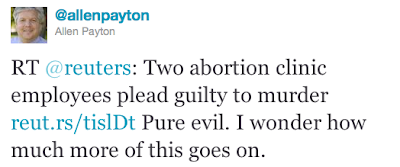Once again, another impassioned debate about the definition has flared up on the pod people's "Transport Innovators" forum. The florid fracas over how many seats should be allowed in a PRT pod reads like the fabled arguments of medieval scholars debating how many angels could sit on the head of a pin.
Some of the pod people challenged PRT huckster Steve Raney's assertion that the new definition of PRT was approved by The Advanced Transit Association (ATRA). The former Chairman of ATRA Dennis Manning fired off this curt admonishment:
Steve:
Did ATRA have anything to do with writing or posting this paper? If not you should not have used their name in the title. It's deceptive no matter what the merits of the paper might be.
Dennis
To which Raney replied:
Dennis,
There were a couple of e-mails today between "ATRA EU" / "ATRA Industry Group" and ATRA members today. There were some ruffled feathers. There was concern about the review process, but it wasn't something that resulted in an escalation to the point of leveling a charge of "deception." I know that ATRA has been following details of the formation of ATRA EU. There's no ATRA EU web site or anything explanatory yet, but I believe something will arise at some point. I, myself, am not an expert on the details of ATRA EU (I'm an expert on the "first use" of the document). And we're in summer, so there shouldn't be an expectation of immediate gratification to the questions raised. I expect there's a mutually beneficial way
forward.
How's that for yet another non-answer?
- Steve
Raney's "non-answer" snark was not well received by Manning:
Steve:
Well you dance around but I think it's fair to say ATRA as an organization didn't underwrite your paper. No deception???
Bullshit!
How's that for a direct answer? My take is that you unsportsmanly used ATRA to promote your own product.
Dennis
... and added another disapproving missive for good measure:
Steve:
This is getting way too deep. Until this paper popped up I'd never heard of the ATRA Industry Group. Who the hell is the ATRA Industry Group? When did they get the blessing of ATRA? You've got a lot of explaining to do to justify connecting ATRA to this
paper which is clearly written to promote the interest of the Big 3. I'm not even arguing that overall this isn't a good move for PRT. But as past Chairman of ATRA I know first hand how much ATRA strived to be PRT system neutral. The ATRA I knew would never endorse this paper.
Dennis
Anupam Vibhuti puts in his two cents:
All this is 'perhaps' a good method for 'crafting' oligopoly. I also see this as the first overt 'deceptive' step if all this has been attempted without express approval of ATRA or majority of PRT proponents in a transparent manner...
And so does Dick Gronning:
This is interesting...
I KNOW that Dr. J Edward Anderson is a member of ATRA. So is Joe Lampe. So, PRT Intl, PRT MN, were consulted on this advertizing paper? OR, were these entities excluded from PRT Industry Group and, possibly, PRT EU? Again, what is the relationship between ATRA, ATRA EU, and PRT Industry Group? Who are the officials? (We already know about ATRA)
Dick
The argument goes on and on... and these people want the taxpayers to spend millions of dollars on something even they cannot define?



